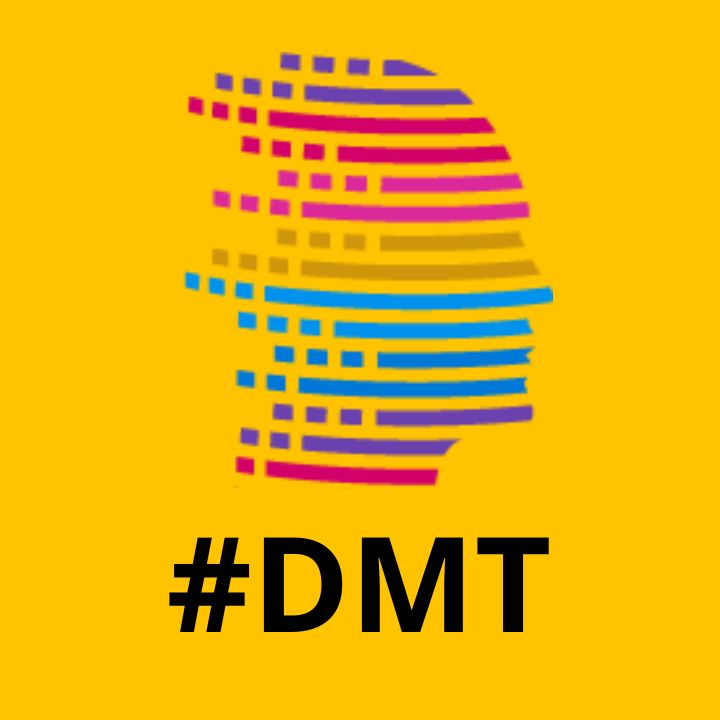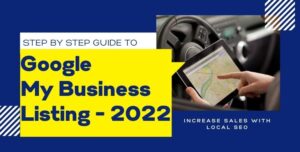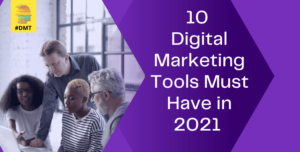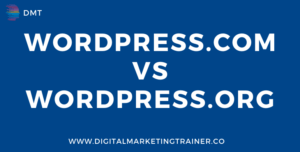Top 150 Digital Marketing Interview Questions:
Digital Marketing allows marketers to use digital technologies such as Social media, Emails, SMS, and other digital media to reach audiences worldwide.
As a career within the digital marketing domain, digital marketers are highly lucrative, given that digital marketing is never enough. This article will cover some helpful digital marketing interview questions to help you take the next step in your career.
In this digital marketing interview question for freshers, they might start the interview with, tell me about yourself in a digital marketing interview.
Digital Marketing Interview Questions 2022:
1. What do you know about Digital marketing?
Ans: Digital marketing is all about promoting brands online. It includes SEO, SEM, link building, email marketing, PPC, affiliate marketing, etc.
2. Types of Digital Marketing?
Ans: Different Digital Marketing aspects:
- Search Engine Optimization (SEO)
- Search Engine Marketing (SEM)
- Content Marketing
- Email Marketing
- Social Media Marketing
- E-commerce Marketing
- Automation
- Lead Generation
3. To increase website traffic, what are the methods you use?
Ans: You can increase your website’s traffic in several ways, including:
- Paid search
- Display advertising
- Content marketing
- Writing crisp headlines
- SEO activities
- Content optimization
- Targeting long-tail keywords
- Guest blogging
- Seeking referral traffic
- Posting content on LinkedIn
- Linking Internally
- Email marketing
4. Explain what SEO is?
Ans: Search Engine Optimization (SEO) involves increasing traffic to a website by increasing its visibility to search engine users. SEO is getting traffic from organic, editorial, or natural search engines.
5. Can you explain keywords in SEO? What is its importance of it?
A keyword is the most critical and fundamental element of Search Engine Optimization. While searching online for a product or service, users use keywords.
The core of all your SEO efforts is keywords. In search engine result pages (SERPs), keywords play an essential role. Optimizing your website for relevant keywords is extremely important. Search engines will rank your website’s pages higher if you do this, which makes it easier for visitors to find it.
6. To optimize your site ranking, what are the key areas where you can use keywords?
Ans: The following areas can be used to improve page ranking:
- Website URL
- Website Title
- Meta tag
- Web page content
- Body text
- H1
- Alt tag
7. What types of SEO are there?
White hat SEO – This technique improves search engine rankings of a site by utilizing white hat methods that do not violate search engine guidelines. In white hat SEO, high-quality content, link acquisition, HTML optimization, and restructuring are some techniques used. You can expect long-term ranking growth when you use White Hat SEO.
Black hat SEO – The black hat method exploits the weaknesses in the algorithms of search engines to get high rankings. Black hat SEO does not comply with search engine guidelines. Keyword stuffing, link spam, hidden text, and hidden links are examples of black hat SEO techniques. These techniques may overgrow rankings, but they will last only briefly.
Grey hat SEO – Grey hat SEO combines both black and white tactics. A black SEO technique is becoming a white SEO technique, and a white SEO technique is becoming a black SEO technique.
8. Name some useful Digital Marketing tools.
Ans:
- Keyword Discovery
- RankWatch
- Moz
- Alexa Ranking
- Google Analytics
- Crazy Egg Heatmaps
- Favicon Generator
- SubmitExpress Link Popularity
- Digital Point Keyword Tracker
- Google Trends
- Google Keyword Planner
- Kissmetrics
- SEMrush
- Ahrefs
- Buzzsumo
- AdExpresso
- Buffer App
- MailChimp
- Unbounce
- AdEspresso
- Ahrefs
- Alexa Ranking
- Buffer App
- Buzzsumo
- Crazy Egg Heatmaps
- Digital Point Keyword Tracker
- Google Analytics
- Keyword Discovery
- RankWatch
- SubmitExpress Link Popularity
- Unbounce
- XML Sitemap Generator
9. Explain inbound marketing and outbound marketing.
Ans: Inbound marketing: A significant component is attracting customers and converting them into leads using various marketing channels, such as SEO, content marketing, viral videos, webinars, and social media.
Outbound marketing involves reaching out to the target audience via traditional marketing methods such as TVCs, radio ads, print advertisements, trade shows, and phone calls.
10. Can you tell the difference between branding and direct marketing?
Ans. As a marketing strategy, branding creates a name, logo, or design easily recognizable as a company’s brand name. In terms of effectiveness, it is a long-term process that is consistently and deliberately accomplished.
You can use direct marketing to reach potential customers through different mediums, such as emails, pamphlets, catalogs, and flyers.
The primary difference between both is the time taken and the mode to reach the consumers. Branding builds awareness, whereas direct marketing help companies reach out to their customers directly.
11. Describe a few tools available for marketing automation.
Ans. There are several scalable digital marketing automation tools, including:
- Anygrowth
- io
- LeadFuze
- Marketo
- Eloqua
- io
- Constant Contact
- HubSpot
- ExactTarget/Pardot
- Userfox
12. Which form of digital marketing is better: SEO or PPC?
Ans:
Using Pay Per Click marketing, one can display advertising in the sponsored results section of a search engine’s results page by paying a fee. At the same time, SEO builds traffic by achieving high rankings in organic search results. Neither PPC nor SEO is better than the other since it depends on business requirements and, most importantly, budget.
13. Differentiate between Dofollow and Nofollow.
Ans:
Search engine crawlers follow these links to give them a boost in search engine results and pass on their reputation (reputation given to another website) to the destination.
Eg:
Crawlers cannot follow these links because they are nofollow. It does not pass on any link juice to the destination domain.
Eg:
14. How does a 301 redirect work? What makes it different from a 302 redirect?
Ans: A 301 redirect informs users and search engines that the original web page has been moved permanently. While the 302 is a temporary redirect, the link juice is not passed on.
15. Why are backlinks important in SEO?
Ans: Backlinks are external links to your website that can help with:
- Improved credibility for your website
- Increased domain authority
- Gaining organic search ranking
- Increased referral traffic
16. What is Mobile-First Indexing?
For indexing and ranking websites, Google uses mobile-friendly content. Search engine results will be higher if your website is responsive. A website’s mobile performance is considered when ranking it.
17. List the most popular local SEO ranking factors.
Ans:
- Each product and service should have its webpage
- Adding your business to the Google My Business page
- Maintaining consistency in NAP citations on your website
- Google map embedding
- Meta tags and content optimization
- Getting your business listed in local libraries
- Reviewing and rating options
18. How to avoid the content penalty for duplicates?
The following are some ways to avoid this:
- The original URL should be 301 redirected.
- I am canonicalizing the original content by using a rel=canonical attribute. It tells the search engine that a specific URL represents the original page.
- In Google Search Console, you can select a preferred domain. In this way, spiders can crawl web pages differently.
19. How can you increase the speed of your Web page?
Ans:
- Using simple website design
- By optimizing images
- Improving server response times
- Reducing redirects
- Enabling browser caching
- Opting for a Content Delivery Network (CDN)
20. What are the best times to target short-tail and long-tail keywords?
Short tail keywords work best when the goal is to drive many visitors to your website. Long-tail keywords are usually used on targeted pages like product pages and articles.
21. Google Sandbox: What is it?
According to the Google Sandbox Effect, new sites are often on probation (inside a box) and cannot rank successfully for the key terms they need to succeed.
As per the notion, Google must contemplate before leaving the fictitious location. It might construct too many connections in a short period.
It was never formally announced, although discussed while Google discussed various things.
22. TLDs – what are they?
Top-level domains make up the last part of an internet address (TLD). Many TLDs are accessible, such as.com, .net, .org, .co.in, and so on.
23. CCTLDs: what are they?
Top-level domains with country codes are known as ccTLDs. Each nation has its domain extension. Only two characters are used in ccTLDs. India, for example, is represented by .in, while . We represent the United States.
24. What is robots.txt?
It’s a text file called robots.txt. It’s everything done via this file. It addresses search engine crawlers on how to index and cache a website, a webpage, a directory file, and a domain.
25. XML sitemaps: what are they?
An XML sitemap is an acronym for “Extensible Markup Language." It provides search engines with information about the most recent changes to your website. There is a list of websites and when they are updated. We can request that search engines regularly scan and index our essential pages using an XML sitemap.
26. How Do You Determine Organic CTRs?
Organic CTRs average between 3-5 percent. You should not benchmark your organic CTR against industry standards but rather against your own CTR curve.
27. Organic CTR: What Does It Mean?
You should track your organic CTR since it affects your rankings and the traffic coming to your website.
28. How Can a Low CTR Be Caused?
Metadata that isn’t compelling is a common reason for low CTR. It could also be due to not utilizing rich snippets.
29. Is a High CTR Good or Bad?
High CTRs mean more traffic to your website, which is good for business. As a result, your brand awareness will improve as well.
Digital Marketing Interview Questions for SEM/PPC:
30. What do you mean by Ad rank?
Ans: Ad Rank is a unique concept that decides which ad should show in which position.
The simple formula to perform this is given below;
Ad Rank is calculated by multiplying CPC bidding by the Quality Score (80% weightage) plus Ad Extensions (20% weightage).
31. Google Adwords Actions: How do they work?
Here are the steps;
All the ads related to that search will appear when someone performs a search.
Based bidding price and other auction factors also matter, such as relevant keywords and details of geographical location.
The highest bidding ads will display first.
32. What do you mean by the Quality score?
Ans: The quality score is a fundamental concept of AdWords. QS explains the CPC and position of ads.
QS is scaled from 1 to 10. If you get the highest quality score, the search engine lowers the pay-per-click and top position on Google.
33. Name the google Ad extensions?
Ans: Below are the various types of Google ad Extensions, such as;
- Callout Extensions
- Structured snippet extensions
- Sitelinks extensions
- Message extensions
- Geographical or location extensions
- Call extensions
- Price extensions
- App extensions
- Affiliate location extensions
- Automated extensions report and
- Review extensions.
34. Explain the factors affect Landing page quality?
The following factors affect the landing page quality;
- Keywords and ad text that are relevant and available within the ad group
- The originality of the content
- Page load times
- User-friendliness
- Ease of navigation factor
- Site policy confirmation
- Transparency factor
- Information and privacy policy factor.
35. Can you list the automatic bidding strategies?
Here are the automated bidding strategies;
- Maximizes the clicks strategy
- Target search page location strategy
- Target outranking share
- Target CPA factor
- Enhanced CPC
36. What do you know about Google Ad API?
API stands for Application Programming Interface. This type of Google Ad API represents large, tech-savvy advertisers and third parties. Developers use Google Ad API to compile an application server that directly communicates with Google Ad words server.
37. What tools do you use for Keyword Research?
Ans: The essential tools used for keyword Research are as follows such as;
- Google keyword planner tool
- World stream Niche finder
- Word tracker tool
- Search query reports.
38. What are the best ways to increase Google Ads conversions?
Answer:
I will give you a brief overview of how to improve conversion rates in Google Ads;
When a visitor becomes a customer, it is called a conversion. The conversion rate is the number of converted visitors divided by the number of page views.
Among the methods used are;
- Ad Quality
- Boosting your conversion rate will be easier with effective campaign management.
- The tracking mechanism used to track the conversion
- Create Ads that are enticing and appealing
- Create better and high-quality landing pages
39. Ad Scheduling: What is it?
Advertisers can schedule specific times for showing ads during clear days or hours. It can also adjust bids based on a particular time or day.
Ad scheduling has the following advantages:
It ensures that the ads are not running during those hours they perform poorly.
Making sure customers are served when client service hours are limited
Making specific customer demand and supply are addressed
40. Google Ads offers different ad formats. What are they?
Text-based ads: These ads only have text content found on Google’s search engine results pages.
Google Display ads: These ads adjust their size and format to fit the available space. Ads can be text or image-based.
Static or interactive images are used in image-based ads. Also, they can be in .gif, .jpeg, or flash formats.
App ads: Drive app downloads with these ads
Video ads: You can run these ads standalone or inserted into streaming video content
Product shopping ads: These ads show details about products such as title, price, and store
Showcase shopping ads: When clicked, these ads display an image and a description with information about products and stores
Call-only ads: Your business’s phone number is displayed in these ads to enable users to call directly
41. RLSA: what is it, and what does it do?
With Remarketing Lists for Search Ads, you can customize your search ad campaigns for people who have already visited your website. Ads and bids can be tailored to these visitors on Google and its other search partners.
RLSA lets you optimize your existing keywords for visitors and bid on keywords that you rarely bid on.
42. What are some reasons why it could have been rejected?
They could only disapprove of an ad because it violated Google’s advertising policies. Some of the guidelines include:
Prohibited content: Advertising content that cannot be displayed on Google
Restricted content: You can promote local content
Prohibited practices: What you can’t do if you want to advertise on Google.
Editorial and Technical: Ads, websites, and ads must meet quality standards
43. In Google Ads, what types of bidding are available?
In CPC or Cost-Per-Click, you can set a maximum price on the cost of someone clicking on your advertisement.
CPV, or Cost-Per-View, is a method of setting the price for your video ads. Only when someone watches, your ad do you have to pay.
A CPM, or Cost-Per-Impression, is the amount of money you pay each time your ad appears on the Google Display Network or the Google Search Network. Your ad generates impressions, which you pay.
44. How can automatic bidding be used?
Through automated bidding, Google sets a bid amount based on the likelihood that your ad will be clicked or converted. You can choose from the following strategies:
Optimize clicks: This strategy automatically sets your bids, so you get as many clicks as possible within your budget.
You can target impression share by setting your bids to appear at the top of the page or anywhere on the SERP.
Increase conversions: Target CPA: This strategy sets Search or Display bids to maximize conversions.
Achieve target return on ad spend: Target ROAS: This strategy automatically sets your bids to maximize your conversion value at the target return on ad spend you specify.
Optimize Conversions: This strategy sets bids to help you get the most conversions for your campaign while staying within your budget.
45. What are the hallmarks of a good PPC landing page?
- A powerful and attractive headline
- A compelling and persuasive piece of copywriting
- Engaging content such as images, videos, and gifs.
- There should be enough white space on the page to draw the user’s attention to specific elements.
- Statistic evidence, testimonials, etc., can be used to build trust.
- A well-designed lead capture form is essential
- Calling for action is essential
- We’ll now talk about email marketing interview questions in this article about digital marketing interview questions.




